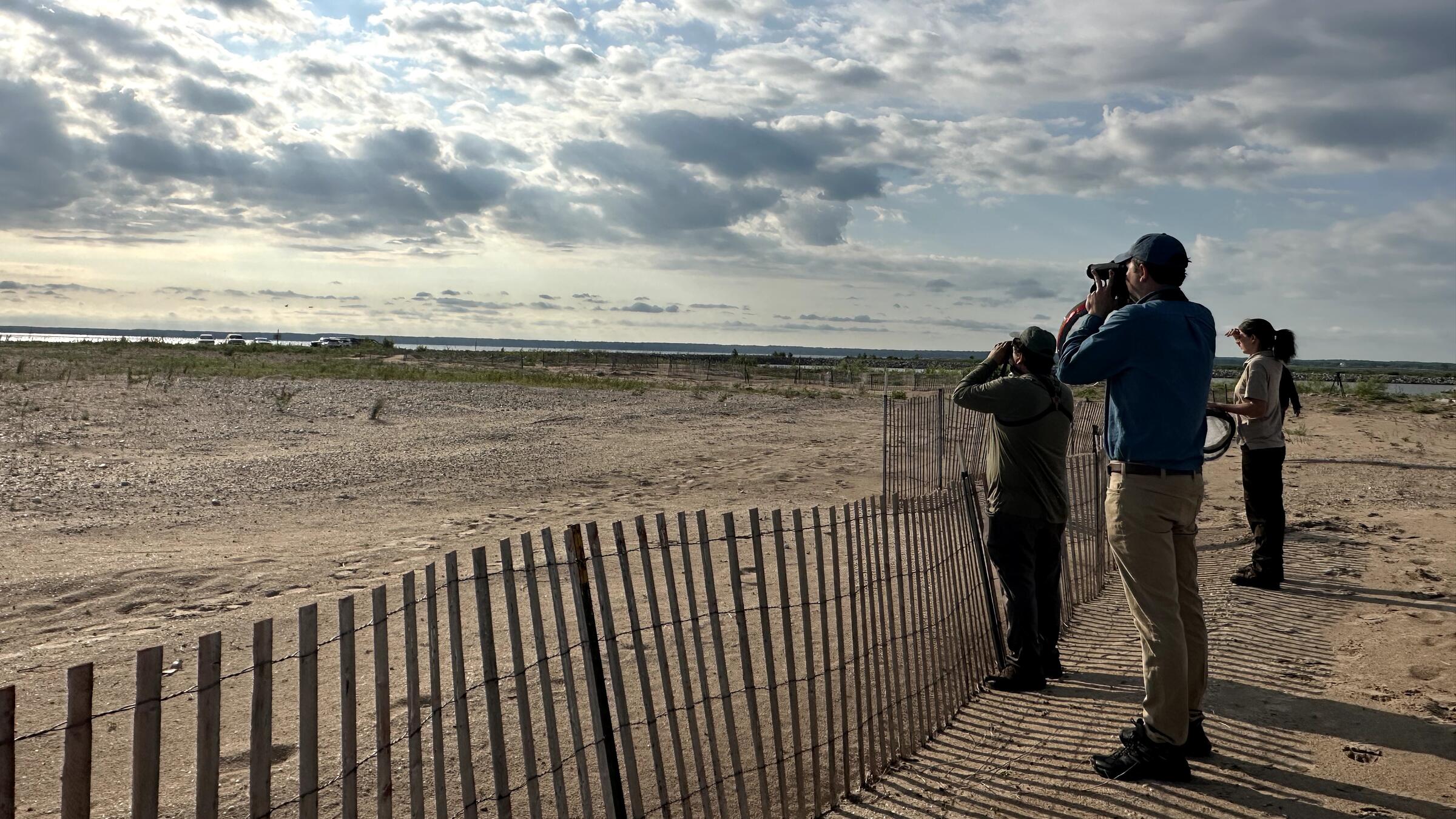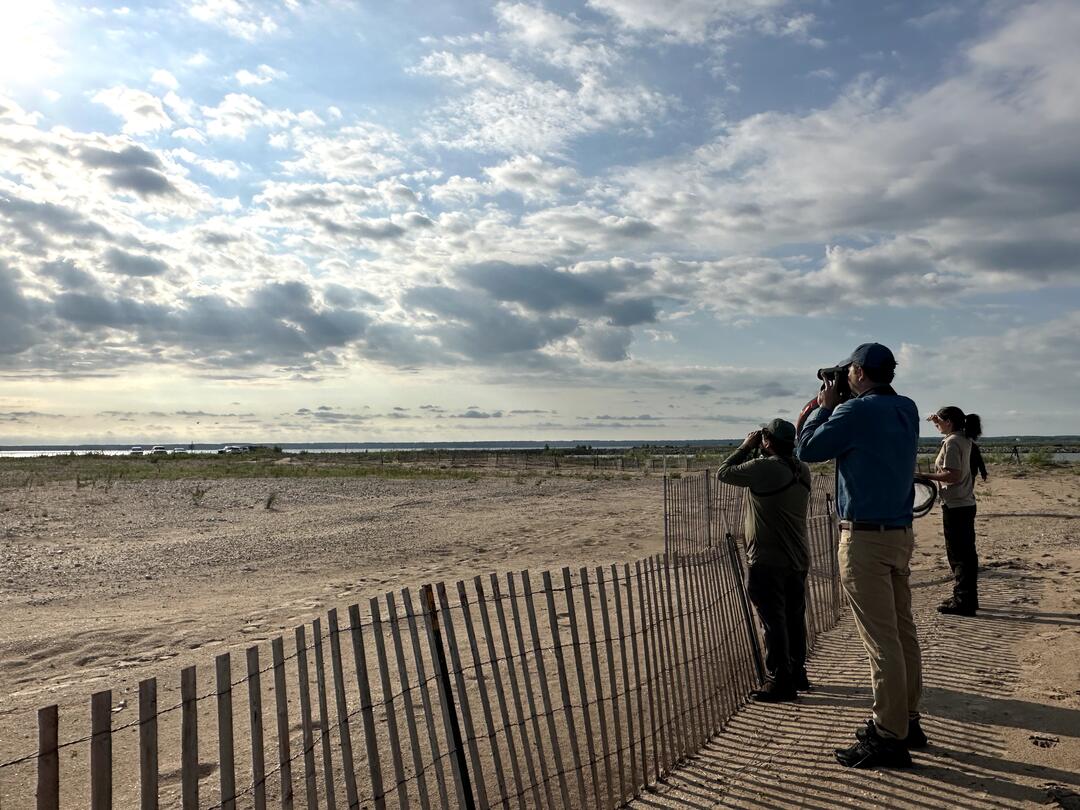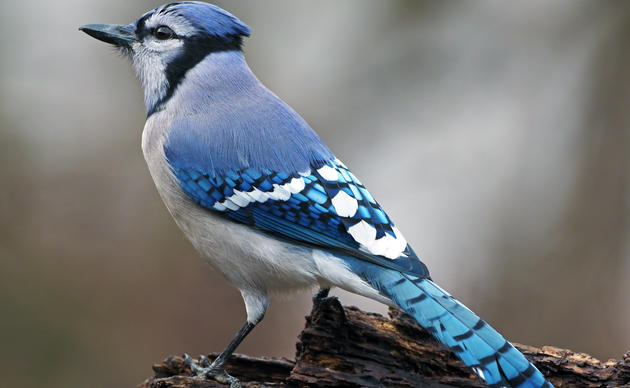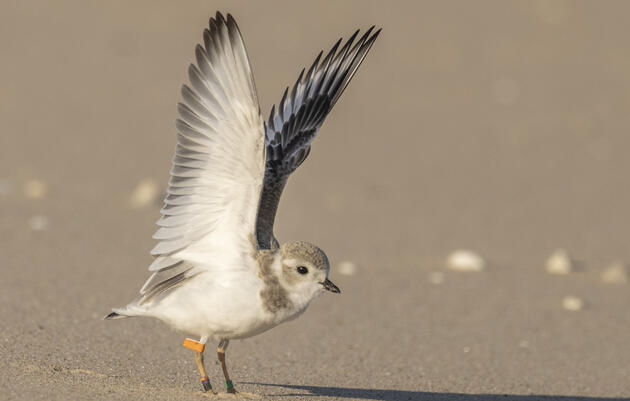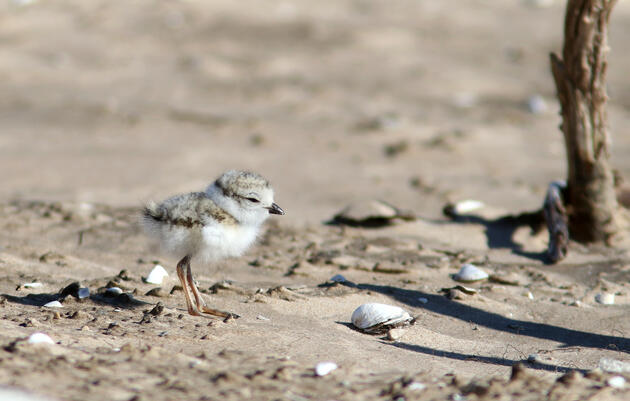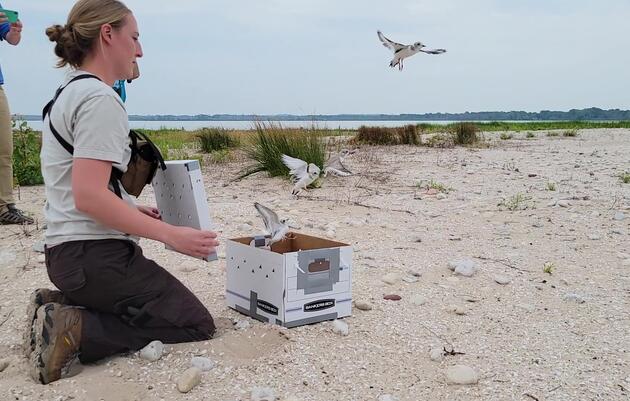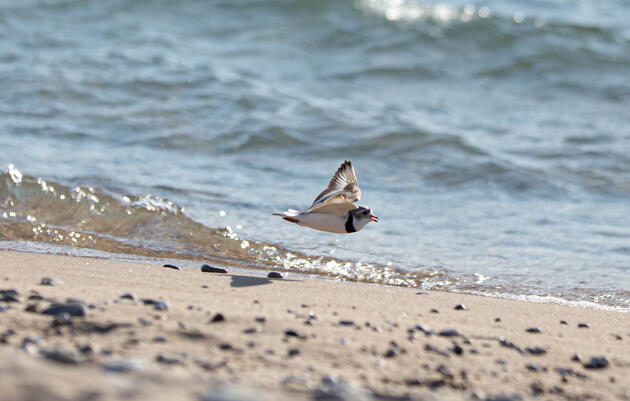About the Cat Island Restoration Project
The Cat Island Restoration Project is an ongoing habitat restoration project including Audubon Great Lakes and over 10 partners that are working together to reconstruct three islands in lower Green Bay, Wisconsin. These islands will provide more than 270 acres of habitat for wildlife. A 2.5-mile-long wave barrier along the remnant Cat Island shoals protects and helps to restore wetland habitat behind the islands while also benefiting fisheries. The islands are currently being constructed and operated by the U.S. Army Corps of Engineers through the beneficial placement of dredge material from the Green Bay Harbor navigation channel. The islands will continue to grow through the placement of dredged material until approximately 2050. The end goal is restoring the islands to functional high-quality wildlife habitat.
Hotspot for Birds and Wildlife

The Cat Island Restoration Site is part of the Lower Green Bay Islands-Bay Beach Wildlife Sanctuary Important Bird Area (IBA) and is home to more than 250 species of birds throughout the year, according to eBird. Thousands of waterfowl congregate here in spring and fall, some songbirds nest here each summer while others stop on their way to and from the Arctic tundra, and raptors rest and hunt here during the day and night. This is one of only a few places in Wisconsin where the endangered Great Lakes Piping Plover, Common Tern, and Caspian Tern nest. These shorebirds are very sensitive to disturbance while nesting. Avoiding their nesting areas also protects other rare birds such as Great Egret, rare insects such as the Hairy-necked Tiger Beetle, and unique plants such as American Sea-rocket and Seaside Crowfoot.
This site is also one of the most important stopover areas for migratory shorebirds in the Great Lakes. More than 30 species of shorebirds stop here each spring and fall to rest and refuel during their incredible migrations. Some species, such as the Hudsonian Godwit, travel from South America to the Arctic Circle and back! Explore the eBird Bird List for this birding hotspot.
This site falls within the Green Bay priority region, which has been identified by Audubon scientists as one of the 12 most important coastal wetland regions across the Great Lakes that are most valuable to conserve or restore for vulnerable marsh birds. Audubon Great Lakes is working with partners in each of these priority regions to coordinate landscape-scale bird monitoring and habitat restoration.
Monitoring Endangered Great Lakes Piping Plovers
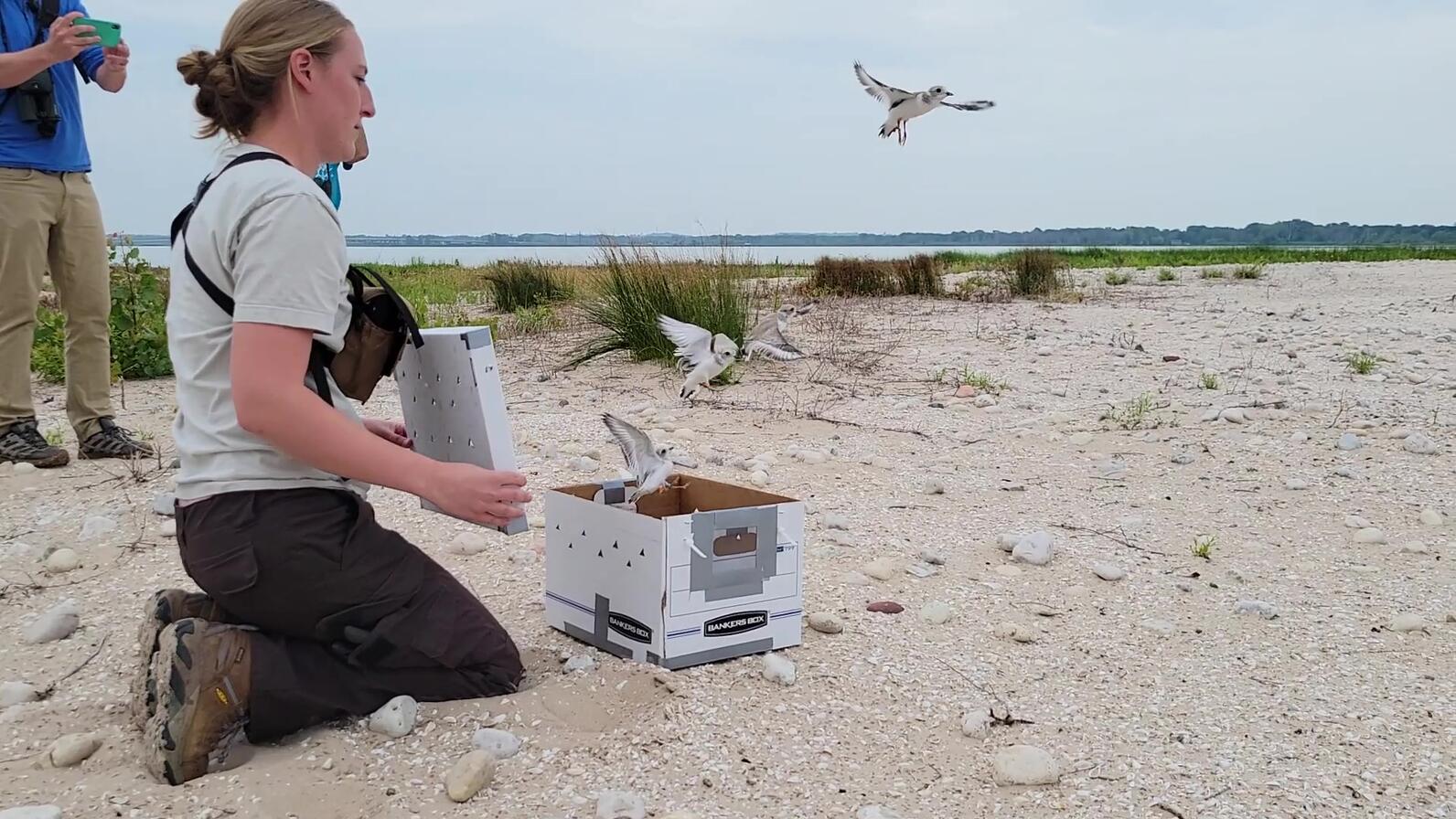
Across the Great Lakes, Great Lakes Piping Plover monitors are trained to recognize when a nest may be abandoned. In 2023, four abandoned eggs were discovered at Long Island, Wisconsin, in the Apostle Islands, and were quickly transported to a captive rearing facility, where the eggs and chicks were cared for. At 28-days old, the chicks were large and healthy enough to be released. Audubon Great Lakes helped release the chicks at the Cat Island Restoration Site with partners U.S. Fish and Wildlife Service, Detroit Zoo and University of Minnesota. It was the first time the U.S Fish and Wildlife Service released captive Great Lakes Piping Plovers outside of Michigan — the population's stronghold.
Audubon Great Lakes coordinates staff, partners, and volunteers to monitor Piping Plovers at the Cat Island Restoration Site every day, including holidays, from April through August. Monitoring during this time frame provides important data on Piping Plover movements and nesting success including arrival, territory forming, mating, egg-laying, nest tending, fledging and departure.
During the summer of 2023, Audubon Great Lakes recruited and trained 25 community scientists at Cat Island to monitor nesting Piping Plovers with partners U.S. Fish and Wildlife Service and Wisconsin Department of Natural Resources. The Great Lakes Piping Plover Recovery Effort joined Audubon Great Lakes and partners at Cat Island to color band Piping Plover chicks — an essential piece of valuable data collection to better understand bird conservation and migration journeys for these federally endangered species.
2023 marked a second record-breaking breeding season for Piping Plovers: 80 pairs nested across the Great Lakes region. There is great potential for the Cat Island Plover population to expand into other areas of suitable habitat and Audubon Great Lakes will continue to monitor the population’s progress.
Background and History
The Cat Islands were a string of islands that eroded away in the mid-1970s due to severe storms and high-water damage. A few small islands and shoals remained, but much of the habitat for aquatic animals, shorebirds, and 13 different species of colonial nesting birds was lost. The changes also left the remaining coastal wetlands in lower Green Bay unprotected from high-energy waves and storms, which resulted in wetland habitat degradation and destruction.
In 2013, construction began for the Cat Island Restoration Project, a large project facilitated by the U.S. Army Corps of Engineers in lower Green Bay to utilize the stored dredge material from the Green Bay shipping channel to restore the Cat Islands and restore wildlife habitat to the area. Great Lakes Piping Plovers found the undisturbed sand the following year, and returned in 2016 when a pair nested, marking the first time the species had successfully bred anywhere on Green Bay in the last 75 years, and the first time the species had ever been known to breed in Brown County.
Partnership and Collaboration
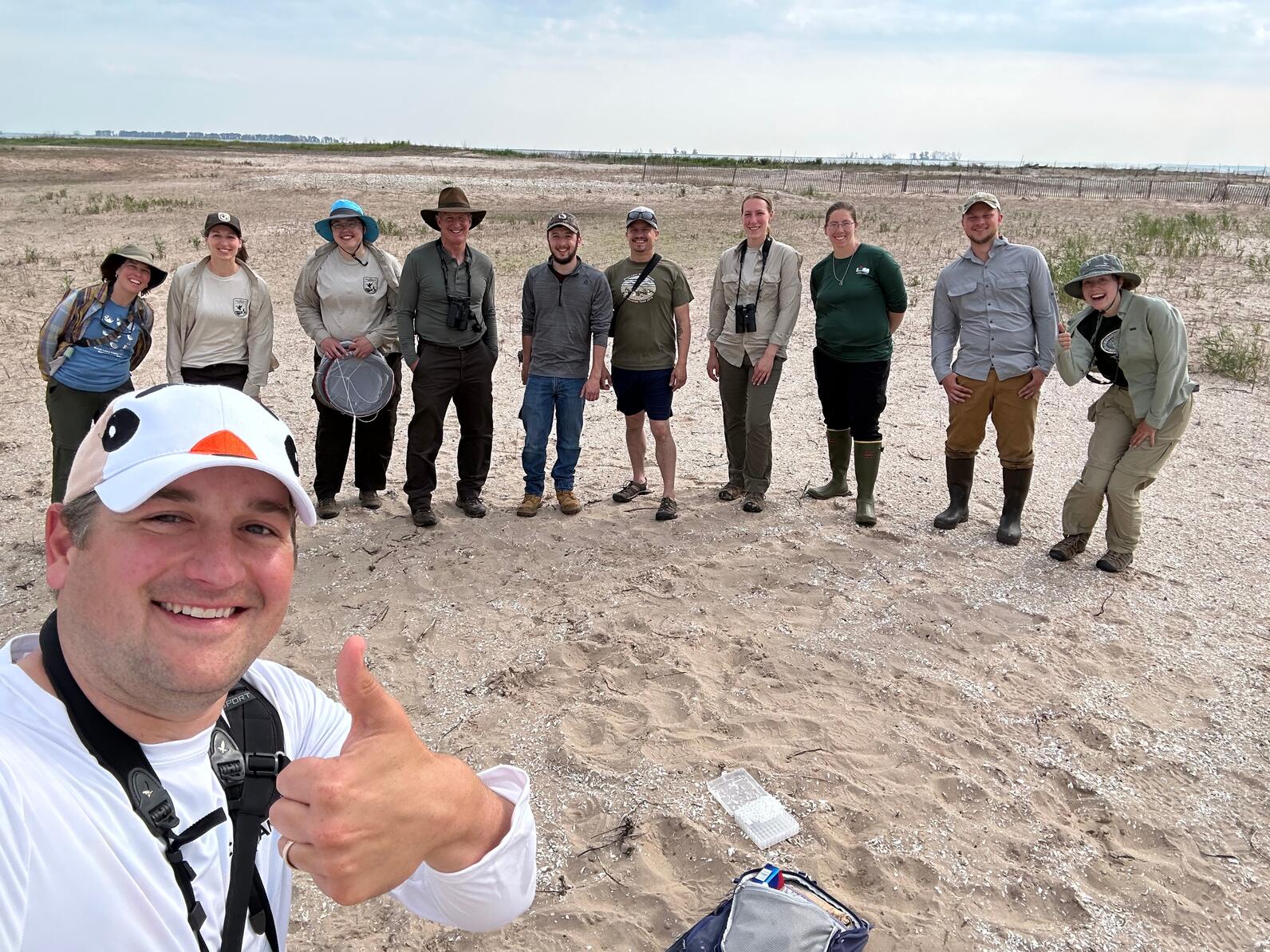
The Piping Plover Conservation Partnership at Cat Island, Wisconsin, is made up of a variety of partners that come together to work on habitat restoration, research, and species conservation at the site:
Funding and Support
Monitoring and habitat restoration efforts to help protect this endangered species are thanks to funding from the Great Lakes Restoration Initiative (GLRI) and USFWS Coastal Program. The implementation of the Cat Island Restoration Site where these birds reside is thanks to funding from the Fox River NRDA, EPA, WIDOT, USACE, and Brown County.
Articles
A Hopeful Future: Another Record-Breaking Season for Great Lakes Piping Plovers
A unified effort of dedicated conservationists, volunteers and community members are driving the recovery of an endangered shorebird
Great Lakes Piping Plover Chicks Banded at Green Bay During a Promising Summer
It’s midsummer, which means Piping Plovers are hatching throughout the Great Lakes region, and Audubon Great Lakes and their conservation partners are diligently working to track and protect these shorebirds
Captive-Reared Great Lakes Piping Plovers Released at Cat Islands in Lower Green Bay for the First Time
Researchers, partners and volunteers work together to protect endangered shorebird
The Story of Ms. Packer the Piping Plover
In birdwatching and conservation circles, Green Bay is becoming well-known for something other than its storied football franchise.
Great Lakes Piping Plovers Have a Record-breaking Breeding Season
Piping plover recovery partners are celebrating many successes as the summer comes to a close
Ways You Can Help
Join A Chapter
Audubon chapters create a culture of conservation in local communities through education and advocacy, focusing on the conservation of birds and conservation of important habitats.
Donate to Audubon
Help secure the future for birds at risk from climate change, habitat loss and other threats. Your support will power our science, education, advocacy and on-the-ground conservation efforts.

